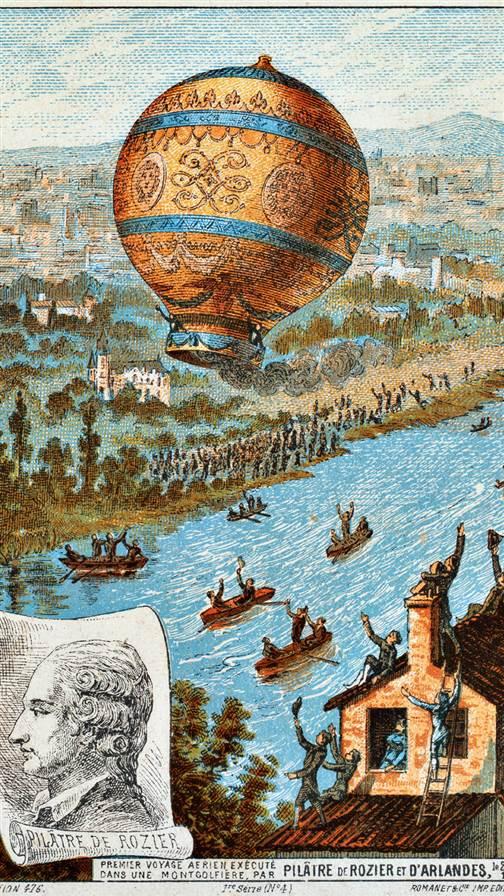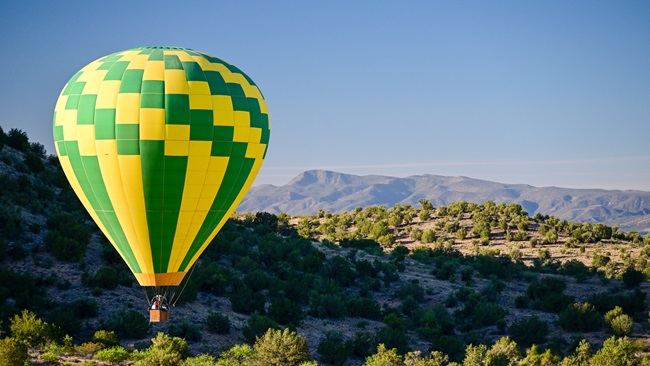Up, up, and away
Premier hot air balloon festival marks 50 years

The son of an aviation family—the owners of Cutter Flying Service—he was a U.S. Air Force pilot with more than 22,000 hours when he sort of stumbled on the sport; the balloon he was in became untethered, but he was hooked. He proposed a balloon rally and race for the 50-year anniversary of an Albuquerque radio station in 1972, which drew 13 balloons and more than 10,000 spectators. The Albuquerque International Balloon Fiesta is held each October and now sees more than 600 balloonists and more than 810,000 spectators. Cutter died in 2011, but he is credited with making Albuquerque the balloon capital of the world.
How they fly
Hot air balloons take flight when the air inside the envelope is heated, causing it to become lighter—less dense—than the air around it. As the hot air rises and fills the balloon, it becomes buoyant and floats up, trying to rise above the cooler surrounding air. That’s a lot of hot air required to pick up the balloon, its basket, and its passengers, which is why the balloons are so massive. Before the flight, the crew (and it takes a village) lays the envelope on the ground with high-powered fans at the mouth. When the balloon is partially inflated with cold air, the pilot heats the burners, and the balloon will begin to rise. The pilot uses the burners to heat the air and increase vertical speed; once the desired altitude is reached, the pilot uses bursts of flame to maintain the altitude. The pilot relies on air currents to steer the balloon. Once a landing spot has been determined, the pilot releases the hot air and quickly guides the basket to the ground.
Getting an LTA certificate
There are two ways to add a lighter-than-air category rating to your pilot certificate (“Light the Fire,” June 2021 AOPA Pilot). The quick route is going to a dedicated Part 141 flight school in a good-weather locale such as Albuquerque. Flying two hours a day, many people can complete the regulatory training requirements of 10 hours of flight training in a week. If you’re a private pilot, you do not have to take the knowledge test, but you will complete a practical test with a DPE. No medical certificate is required. The leisurely route means you buy your own balloon setup (about $10,000; no flight school rents balloons) and find an instructor (no easy feat), and you’ll need a trailer or vehicle to transport your gear. Balloons are FAA-certificated aircraft that require annual inspections.




